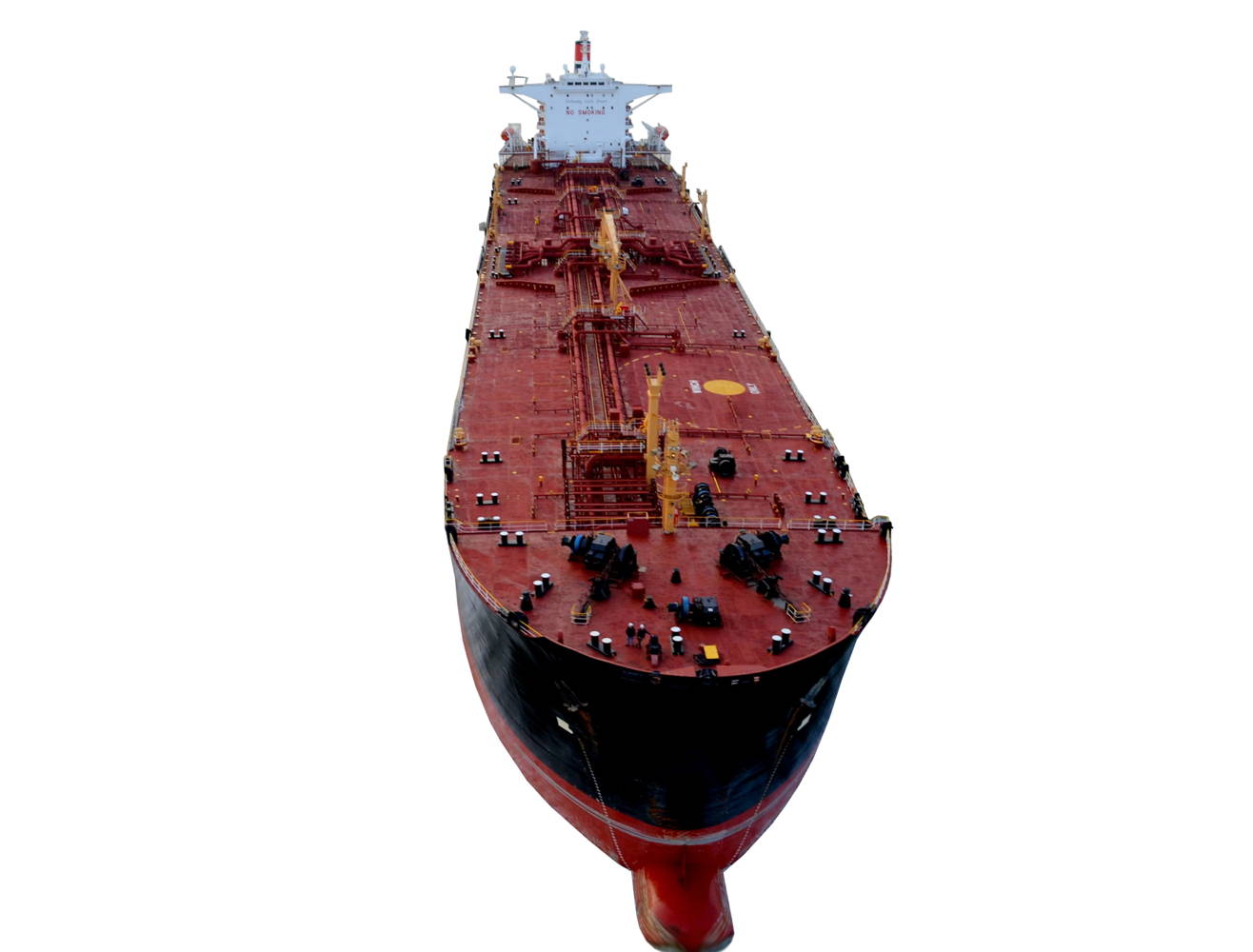What will 2019 hold for the still volatile tanker market? Experts believe that the sector has reached the bottom after a largely poor 2018. For the new year, OPEC production cuts, trade wars and Iran sanctions set the scene
In 2018, fleet growth for both crude and oil product tankers were low. But as the demand growth was even lower, freight rates hit the lowest level ever. The overcapacity in the market expanded, says BIMCO’s chief shipping analyst, Peter Sand, »The tanker market is really a curious case these days,« he puts it. In the VLCC sector, the market had seen the highest number of ships sold for demolition, 34 units until December 2018. This matched the number of 1999, which had been the highest since 1986.
But volatility has returned to the tanker market in Q4 2018. Conditions across the crude and products markets have seen rapid improvement. BIMCO had expected freight rates to improve in Q3 and Q4, but what happened with crude oil tankers wasn’t foreseen: Freight rates made an exceptional comeback. Monthly average VLCC earnings in April and May were below 4,000$/day, they moved up to 7-8,000$/d in June and July and 11,000$/d in August and September – all in the loss area. But October saw average earnings shoot up to 33,500$/d. Oil product tankers were still suffering, despite somewhat higher freight rates in early November.
»After a largely poor year for the tanker sector, the simultaneous uptick in crude and products markets continues to support the idea that a key driver in tanker spot market volatility are oil prices,« says Tim Smith, Director, Oil and Tanker Markets at Maritime Strategies International (MSI). According to Smith, seasonal demand is playing a role as autumn maintenance programmes are completed and refineries increase run rates. New refinery start-ups in Asia are also driving up crude import demand and adding to an amply supplied Asian product market.
VesselsValue Senior Analyst Court Smith attributes the rate strength in the winter months to the »heavy level of ship recycling« reported throughout the year. »It is interesting to note that the rate recovery this fall was not driven by a significant increase in cargo loadings, but by a stabilization in fleet size.«
Sanctions, trade wars, OPEC cuts
Besides that, political factors seem to become a major influence in 2019. Sanctions prohibiting business with Iranian ports, the country’s energy sector and purchasing of Iranian oil and oil products came back into force in early November. BIMCO sees changing trade lanes caused by the US sanctions. »A shift away from Iran primarily to other Middle Eastern exporters doesn’t change trading patterns much, as barrels will be switched with heavy sour crude oil of a similar quality,« BIMCO said in a recent report. Elsewhere in the world, Libya is scaling up production and the US has set a record for crude oil exports to all nations other than China for seven months in a row.
In August and September 2018, when previous number one purchaser China took zero US crude oil, American exporters had to seek new buyers that were found in the Atlantic Basin and in the Far East. The new number one long-distance buyer, South Korea, has helped in keeping tonne-mile demand almost unchanged from July 2018’s record high. In China’s absence, Canada has emerged as the new top buyer.
Smith expects Middle East crude production and exports to decline in the near-term as Iranian sanctions bite and OPEC cuts intensify in Q1 2019. OPEC+, the cartel and a coalition led by Russia, plans to reduce production by a combined 1.2mill. barrels per day, starting from January 2019. Some analysts think that 2019 VLCC rates might suffer from the global production cuts while ohers expect the impact to remain only limited. According to Clarksons Platou Securities, the build-up of US pipeline capacity (2 mill. barrels by the end of 2019) will provide long-haul volumes form the US Gulf. In combination with several other factors – less fleet growth than compared to 2016 (when the last round of cuts was decided), expected refinery demand due to a low oil price – this could make up for the losses. »Continued growth in US crude exports, which exceeded 3mill.b/d in late November, are adding long-haul demand,« MSI’s Tim Smith says, supporting this view.
VesselsValue’s Court Smith has taken a closer look at the possible impacts of the announced OPEC production cuts. VV believes that they will have a negative impact on the earnings of VLCCs in the short run, but may boost Suezmax and Aframax demand in the medium term. The current round of OPEC cuts was enacted in late 2016 to put upwards pressure on oil prices, and have been successful at that goal. Now that prices are falling again, cuts are back on the table. OPEC cuts will reduce the number of VLCC cargoes available in the Arabian Gulf, encouraging owners to position ships in other primary load regions such as West Africa, Brazil, and the Caribbean.
A decisive factor in 2019 will once again be fleet growth. MSI expects the balance between tanker supply and demand growth in 2019 to be tight. »Demand growth is unlikely to be exceptional, although growth will improve on 2018, with continued increases in crude flows from the Americas to Asia being a key support.« MSI views continued high scrapping levels in 2019, comparable to 2018, as crucial for sustaining the market improvement, suppressing supply growth and allowing underlying market utilisation to improve. »Lower levels of scrapping are a risk to our forecast, whilst the macroeconomic environment also appears vulnerable, threatening underlying oil demand growth,« Smith says.
BIMCO expects fleet growth for oil product and crude oil tankers to be higher than in 2018. »Mostly for the crude oil sector as it swings back from very low to 2-3%. This is the real challenge,« Sand says. For the oil product tanker fleet, BIMCO’s 2019 fleet growth forecast is at 2.4%, with deliveries and demolitions both falling. According to BIMCO, the crude oil tanker fleet increased by 0.9% in 2018. »Looking into 2019, much depends on the level of demolition. Following three low months of ordering activity from June to August, September saw owners and investors showing a renewed interest in crude oil tanker tonnage. The combined order for 1.7m DWT of Suezmax (5) and Aframax (8) was the highest since June 2017,« says Sand.
Difficult but significantly better
The recent upturn in markets corroborates MSI’s view of 2018 as the nadir in the market. »Although we expect the levels of spot earnings attained in November/December – which have been exceptional for some sizes/markets – to recede in Q1, overall MSI forecasts 2019 tanker markets to improve on 2018, with earnings significantly better on an annual average basis,« says Tim Smith.
In contrast, Peter Sand says: »In spite of the strong market seen since early October for crude oil tankers, we have seen no massive change to fundamentals. We expect 2019 to be a difficult year for the crude oil sector, mostly due to the once-again-increasing fleet size – but also due to demand not foreseen to be much stronger than a ›normal year‹ – which is no higher than 2%.« For the oil product market, the development since Mid-November has been positive, somewhat connected to the lift in crude oil tankers. A pick up in business arrived as refined oil is redistributed. »Patience is the key to success in both sectors – the second half may bring around better rates – as seasonality will be combined with the lead-up to the IMO2020 deadline on 1 January 2020,« Sand explains. This view is supported by Smith: »We expect the recovery to continue into 2020, further supported by IMO regulations and associated higher refining runs, sweet crude demand and product redistribution and logistical demand. These issues will become increasingly important in H2 19.«
Overall, sentiment among tanker owners is improving – in spite of many uncertainties. According to the latest Shipping Confidence Survey of consultancy Moore Stephens, the number of respondents expecting higher freight rates over the next twelve months in the tanker market was up by 7% on the previous survey to now 60%, while those expecting lower rates was up from 9% to 12%.













